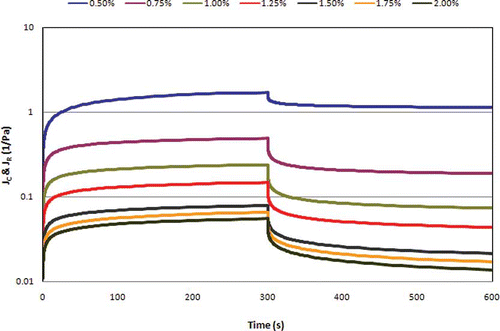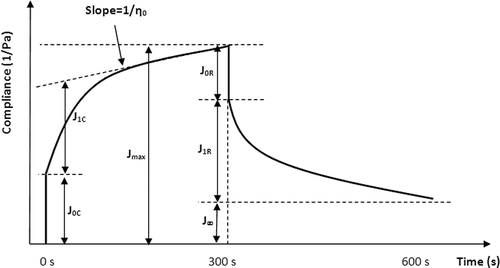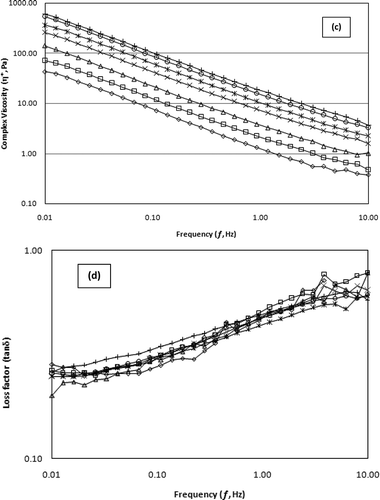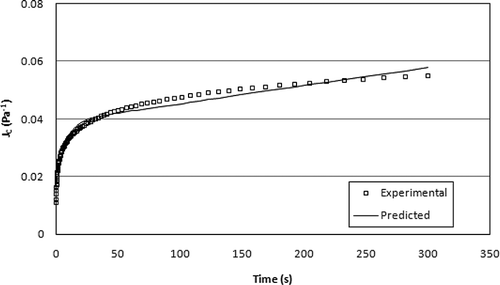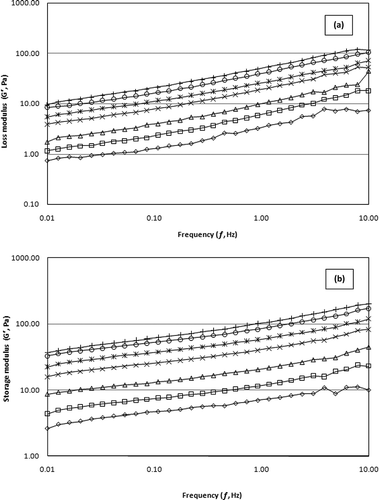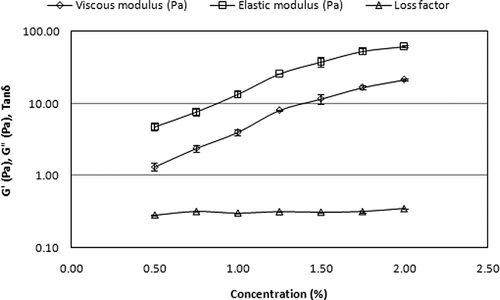Figures & data
Figure 2 Stress dependence (1 Hz, 20°C) of (a) loss modulus and (b) storage modulus for sage seed gum at different concentrations (◊, 0.5%; □, 0.75%; △, 1%; ×, 1.25%; *, 1.5%; ◯, 1.75%; +, 2%).
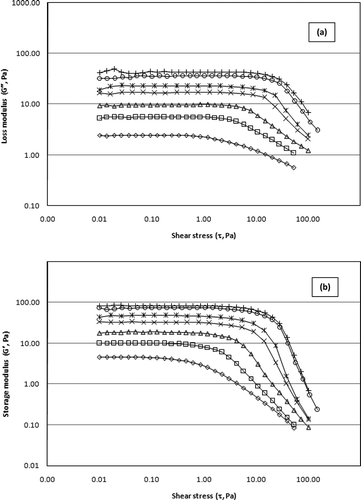
Table 1 Frequency dependency of elastic and viscous moduli of SSG at different concentrations and constant temperature of 20°C
Figure 5 Compliance versus time in “creep and recovery test” for sage seed gum at different concentrations (applied shear stress: 1 Pa; temperature: 20°C). (Color figure available online.)
